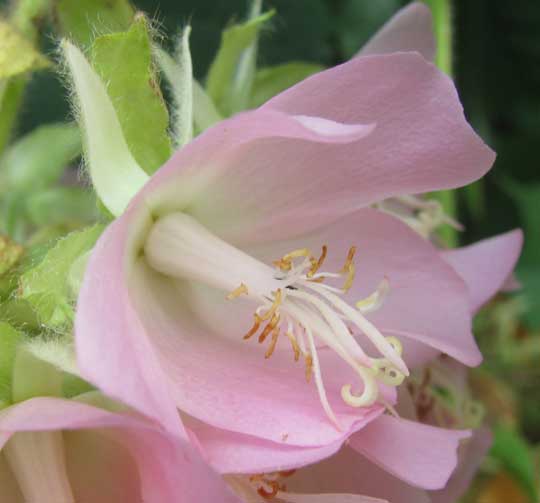Excerpts from Jim Conrad's
Naturalist Newsletter
from the January 1, 2012 Newsletter issued from Hacienda Chichen Resort beside Chichén Itzá Ruins; limestone bedrock; elevation ~39m (~128ft), N20.675°, W88.569°; central Yucatán state, MÉXICO
DOMBEYA FLOWERING
With this being my third winter here it's amazing that on my bike wanderings of Pisté on Sunday fruit-buying mornings I'm still finding exotic plants in people's gardens I never dreamed might be here. In the old days hacienda owners competed with one another to bring beautiful or unusual plants from the farthest corners of the world. I bet that eventually many of those plants died off in the haciendas themselves, but managed to survive in the backyards of generation after generation of attentive Maya families, whose distant ancestors may have worked on the haciendas, and maybe occasionally sneaked cuttings or seeds from "the big place." Below, you can see part of a 15-ft-tall tree (4.5m), which this week jumped out at me from a very modest hut's corner:

The pink flower-heads are grapefruit-size and the leaves about a foot across. A single flower is shown below:

The first thing to notice in that blossom is that the brown-anthered stamens have their white, threadlike filaments united into a cylinder at their bases, and that white cylinder encircles the ovary's slender neck, or style, for most of its length, until it ends in backward-curving, white stigmas. We've seen again and again that typically this is the prime field mark for members of the Hibiscus Family, the Malvaceae, and that's the case now. Knowing that helped a lot, because my first impression had been that this was surely a hydrangea, though I don't recall seeing a hydrangea in tropical Mexico.
Simply by doing an image search on "malvaceae pink" -- pink not being a particularly common color in the Hibiscus Family -- I quickly found a match informing me that we had a member of the African genus Dombeya. Wikipedia then informed me that Dombeya is now regarded as one of the Hibiscus Family's largest genera, embracing about 225 species, so, without technical keys, any ID to species level has to be thought of as only a best guess. However, ours looks very much like DOMBEYA WALLICHII, which is a frequently planted species. Dombeya wallichii is native to Madagascar, the big island off Africa's coast in the Indian Ocean.
I wish I could shake the hands of the long line of gardeners who over the generations have nurtured the Mexican ancestors of this wonderful tree found in Pisté this week.